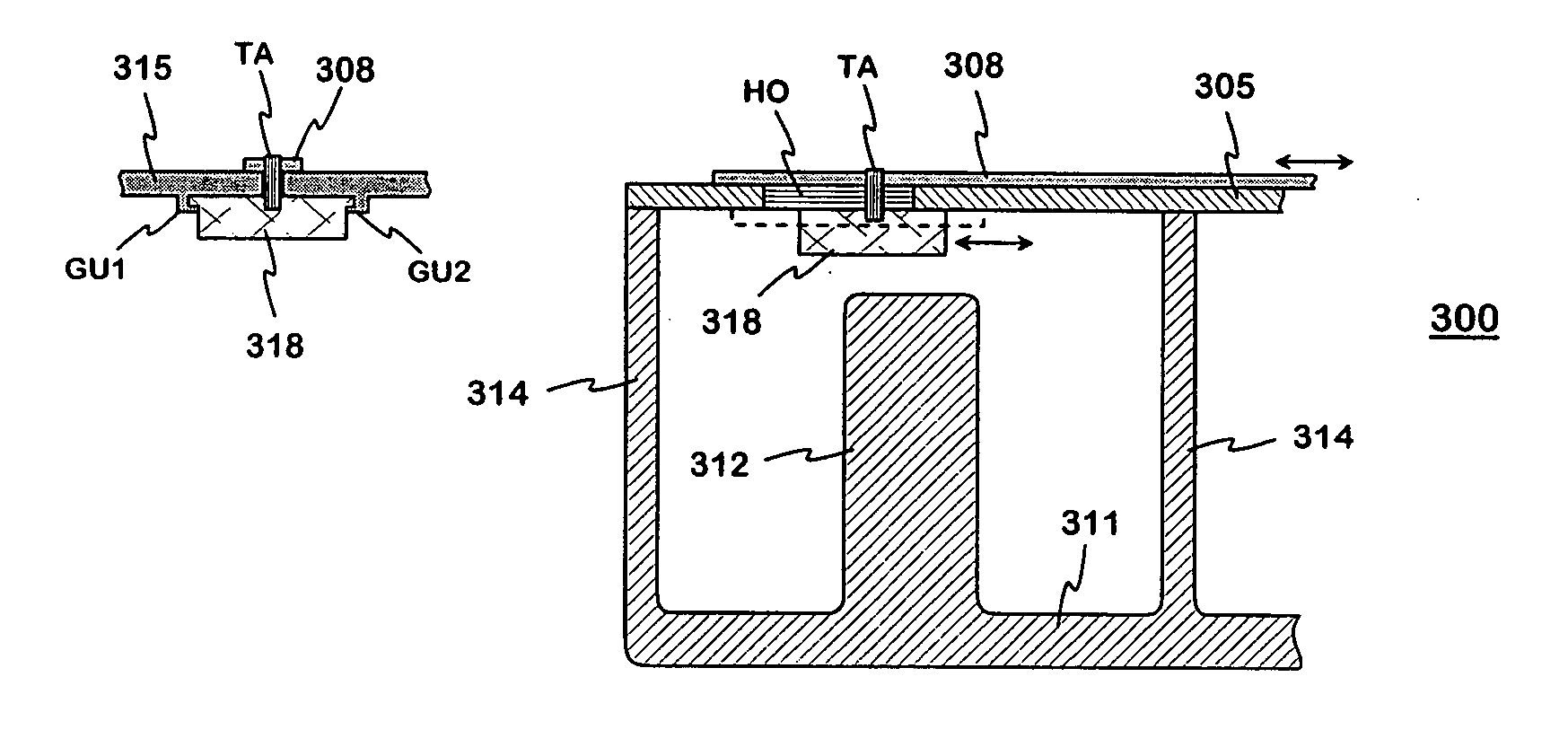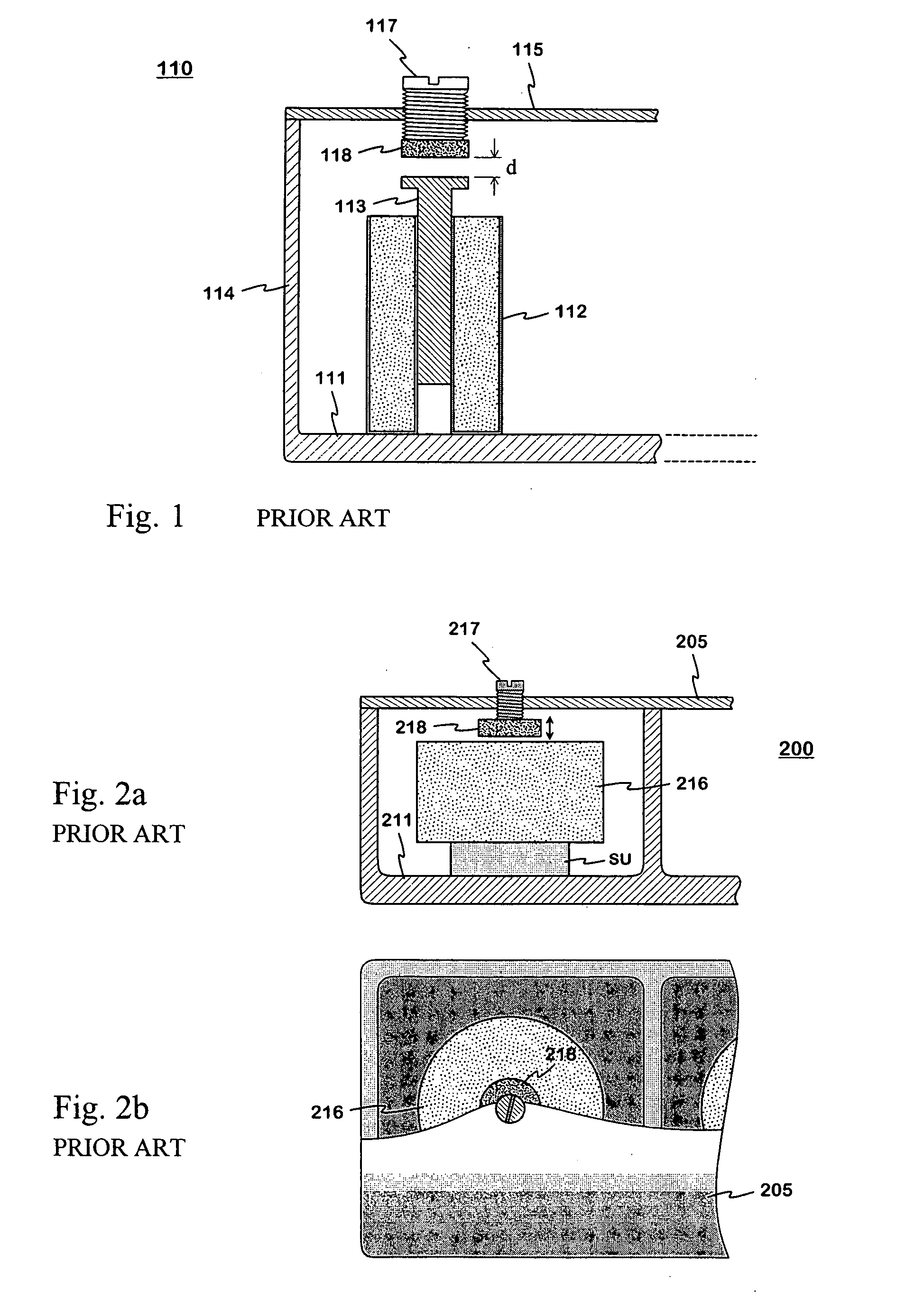Resonator filter
a resonator filter and filter technology, applied in the field of resonator filters, can solve the problems of increasing the manufacturing cost of the manufacturer, affecting the quality of the resonator, and the variability of the natural frequency of the same resonator is usually too large to keep all natural frequencies at a sufficiently right value, so as to achieve the effect of saving production costs
- Summary
- Abstract
- Description
- Claims
- Application Information
AI Technical Summary
Benefits of technology
Problems solved by technology
Method used
Image
Examples
Embodiment Construction
[0027]FIGS. 1 and 2 were described already in connection with the description of prior art.
[0028]FIGS. 3a and 3b show an example of a tunable filter according to the invention. The filter 300 consists of quarter wave coaxial resonators, from which the first resonator and partly the second resonator are seen in the figure. FIG. 3a shows the structure in a longitudal section from one side. The first resonator has a bottom 311, an inner conductor 312, an outer conductor 314 and a lid 305. The tuning element 318 is a right-angled prismatic dielectric piece located at the open end of the resonator. In the vertical direction it extends from the lid about halfway to the top of the inner conductor 312. In this example the tuning element is attached to the lower surface of the resonator's lid with the aid of the guide rails GU1 and GU2 shown in the accompanying figure so that it can be moved back and forth in the horizontal plane. In order to be able to move it manually from the outside the...
PUM
 Login to View More
Login to View More Abstract
Description
Claims
Application Information
 Login to View More
Login to View More - R&D
- Intellectual Property
- Life Sciences
- Materials
- Tech Scout
- Unparalleled Data Quality
- Higher Quality Content
- 60% Fewer Hallucinations
Browse by: Latest US Patents, China's latest patents, Technical Efficacy Thesaurus, Application Domain, Technology Topic, Popular Technical Reports.
© 2025 PatSnap. All rights reserved.Legal|Privacy policy|Modern Slavery Act Transparency Statement|Sitemap|About US| Contact US: help@patsnap.com



